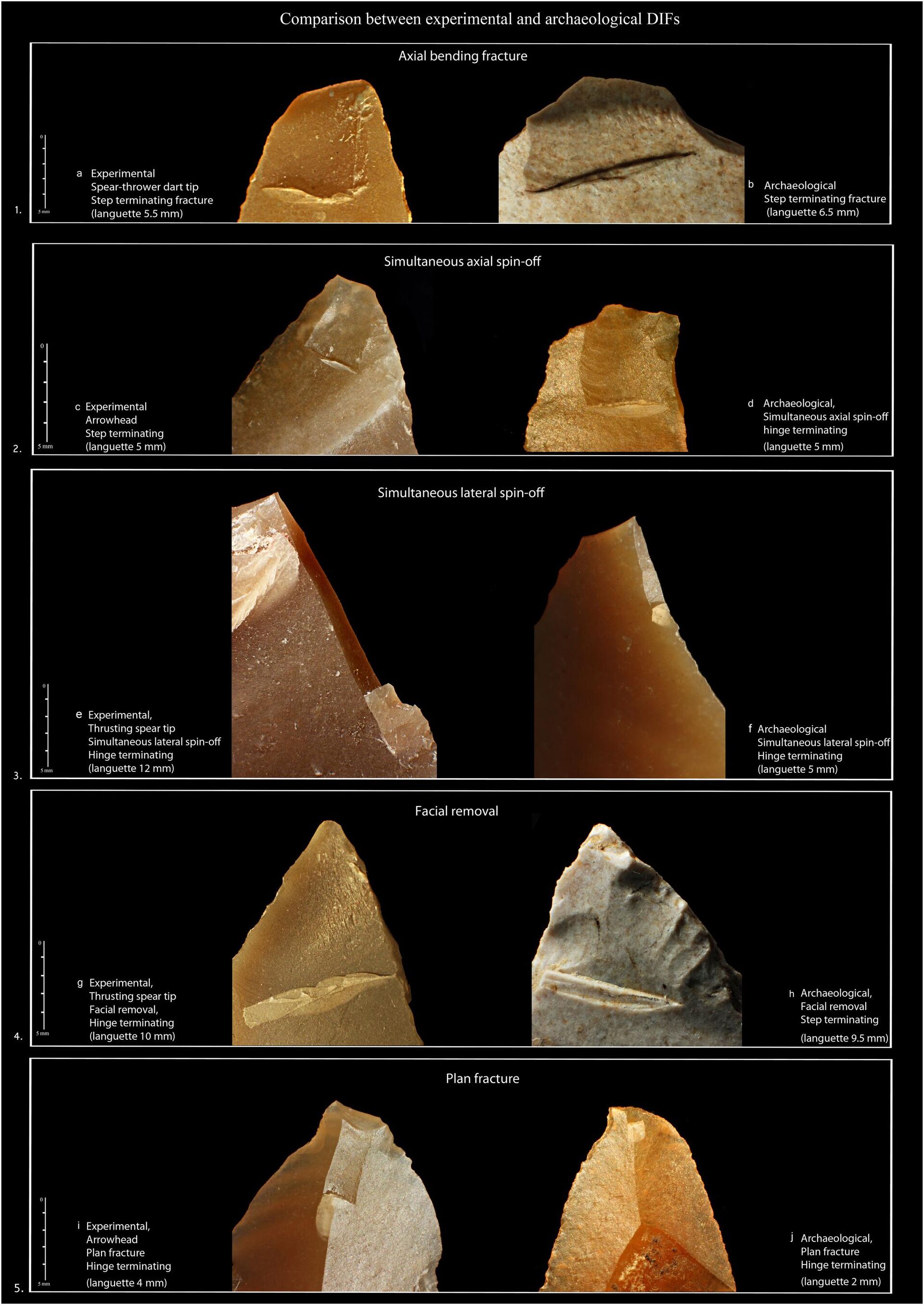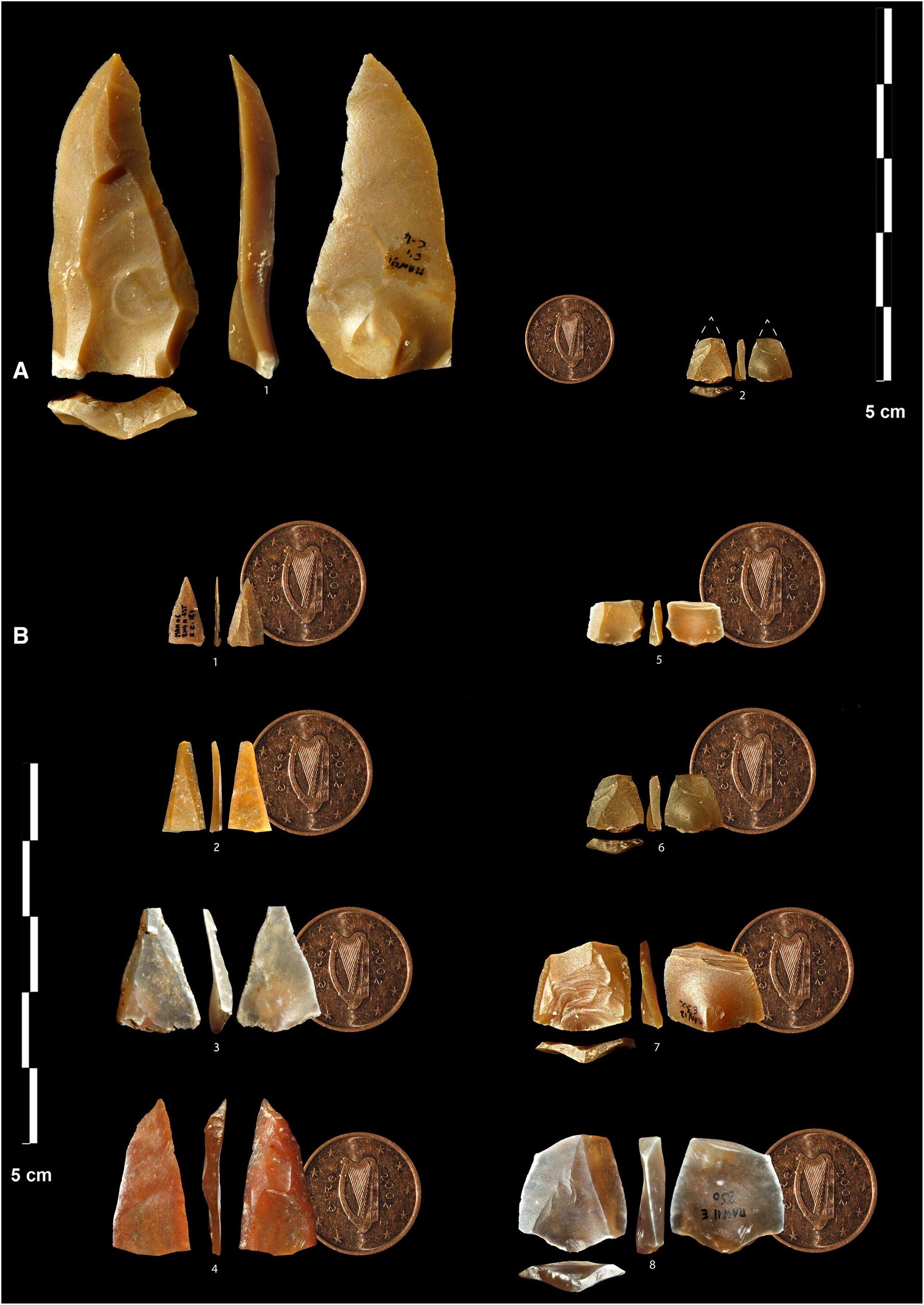https://sputnikglobe.com/20230224/first-humans-from-africa-may-have-brought-archery-to-europe-study-reveals-1107774417.html
First Humans From Africa May Have Brought Archery to Europe, Study Reveals
First Humans From Africa May Have Brought Archery to Europe, Study Reveals
Sputnik International
A recent study on stone points and other artifacts unearthed at a French rock-shelter has revealed that Homo sapiens, who came to Europe about 54,000 years ago from Africa, may have introduced archery to the continet.
2023-02-24T16:53+0000
2023-02-24T16:53+0000
2023-02-24T16:53+0000
africa
archeology
homo sapiens
archery
bow
neanderthals
study
scientific study
neolithic era
https://cdn1.img.sputnikglobe.com/img/07e7/02/18/1107776035_0:160:3073:1888_1920x0_80_0_0_5739b94b7f873ec312bc3d84e21470c0.jpg
A new study in the Science Advances journal on stone points and other artifacts unearthed in a French rock-shelter has revealed that Homo sapiens, who arrived in Europe about 54,000 years ago from Africa, may have introduced archery to the continent. The researchers examined triangular stone weapon points and other items found at a rock-shelter in southern France called Grotte Mandrin. The study presented the earliest evidence for "mechanically propelled projectile technology" in Eurasia, demonstrating it via use-wear and impact damage analyses. Previous stone point discoveries showed that hunting with a bow and arrow originated in Africa between 80,000 and 60,000 years ago, while recovered human fossils indicated that Homo sapiens visited Grotte Mandrin about 56,800 years ago. Therefore, it was before the demise of Neanderthals, which occurred 40,000 years ago, and earlier than scientists had supposed that Homo sapiens reached Europe. According to the current study, even though no bows were found at the French site, the earliest known Homo sapiens who migrated into Neanderthal territories had purportedly mastered the use of the bow. Among 852 stone artifacts discovered at Grotte Mandrin, which dated back to about 54,000 years, 196 triangular stone points had high-impact damage. Some of the stone points also displayed alterations caused by butchery activities. The researchers compared the findings with damage on stone copies of the artifacts that they used as arrowheads shot from bows and as the tips of spears. Additional comparative evidence was provided from arrowheads used by present-day hunting groups.It was noted that the production of lithic artifacts was focused on standardized tiny points, some clustering around only 1 cm in length. Impact damage analyses showed that these stone points had been attached at the bottom to shafts. The scientists stated that the smallest points could have pierced animals only when shot from bows. Thus, they served as arrowheads. The study concluded that the production of these artifacts was unseen in archaeological assemblages of this period and represented a main structural difference between Neanderthal and modern human social and material organization. The researchers also assumed that this bow-and-arrow technology of the first modern humans in Europe may have given them a competitive advantage over local Neanderthal societies.
https://sputnikglobe.com/20210528/earliest-known-war-turns-out-to-be-series-of-conflicts-13400-years-ago-scientists-say-1083014033.html
africa
Sputnik International
feedback@sputniknews.com
+74956456601
MIA „Rossiya Segodnya“
2023
News
en_EN
Sputnik International
feedback@sputniknews.com
+74956456601
MIA „Rossiya Segodnya“
Sputnik International
feedback@sputniknews.com
+74956456601
MIA „Rossiya Segodnya“
africa, archaeology, europe, homo sapiens, bow and arrow, stone points, archery
africa, archaeology, europe, homo sapiens, bow and arrow, stone points, archery
First Humans From Africa May Have Brought Archery to Europe, Study Reveals
Archaeological studies suggest that mechanically propelled weapons like a bow and arrow suddenly emerged in the Eurasian record following the arrival of anatomically and behaviorally modern humans about 45,000 to 42,000 years ago. Meanwhile, evidence for weapon use during the preceding periods in the region remains scarce.
A
new study in the Science Advances journal on stone points and other artifacts unearthed in a French rock-shelter has revealed that Homo sapiens, who arrived in Europe about 54,000 years ago from Africa, may have introduced archery to the continent.
The researchers examined triangular stone weapon points and other items found at a rock-shelter in southern France called Grotte Mandrin. The study presented the earliest evidence for "mechanically propelled projectile technology" in Eurasia, demonstrating it via use-wear and impact damage analyses.
Previous stone point discoveries showed that hunting with a bow and arrow originated in Africa between 80,000 and 60,000 years ago, while recovered human fossils indicated that
Homo sapiens visited Grotte Mandrin about 56,800 years ago. Therefore, it
was before the demise of Neanderthals, which occurred 40,000 years ago, and earlier than scientists had supposed that Homo sapiens reached Europe.
According to the current study, even though no bows were found at the French site, the earliest known Homo sapiens who migrated into Neanderthal territories had purportedly mastered the use of the bow. Among 852 stone artifacts discovered at Grotte Mandrin, which dated back to about 54,000 years, 196 triangular stone points had high-impact damage. Some of the stone points
also displayed alterations caused by butchery activities.
The researchers compared the findings with damage on stone copies of the artifacts that they used as arrowheads shot from bows and as the tips of spears. Additional comparative evidence was provided from arrowheads used by present-day hunting groups.
It was noted that the production of lithic artifacts was focused on standardized tiny points, some clustering around only 1 cm in length. Impact damage analyses showed that these stone points had been attached at the bottom to shafts. The scientists stated that the smallest points could have pierced animals only when shot from bows. Thus, they served as arrowheads.
"These technologies, associated with the oldest modern human remains currently known from Europe, represent the technical background of these populations during their first incursion into the continent," the study read.
The study concluded that the production of these artifacts was unseen in archaeological assemblages of this period and represented a main structural difference between Neanderthal and modern human social and material organization. The researchers also assumed that this bow-and-arrow technology of the first modern humans in Europe may have given them a competitive advantage over local Neanderthal societies.







